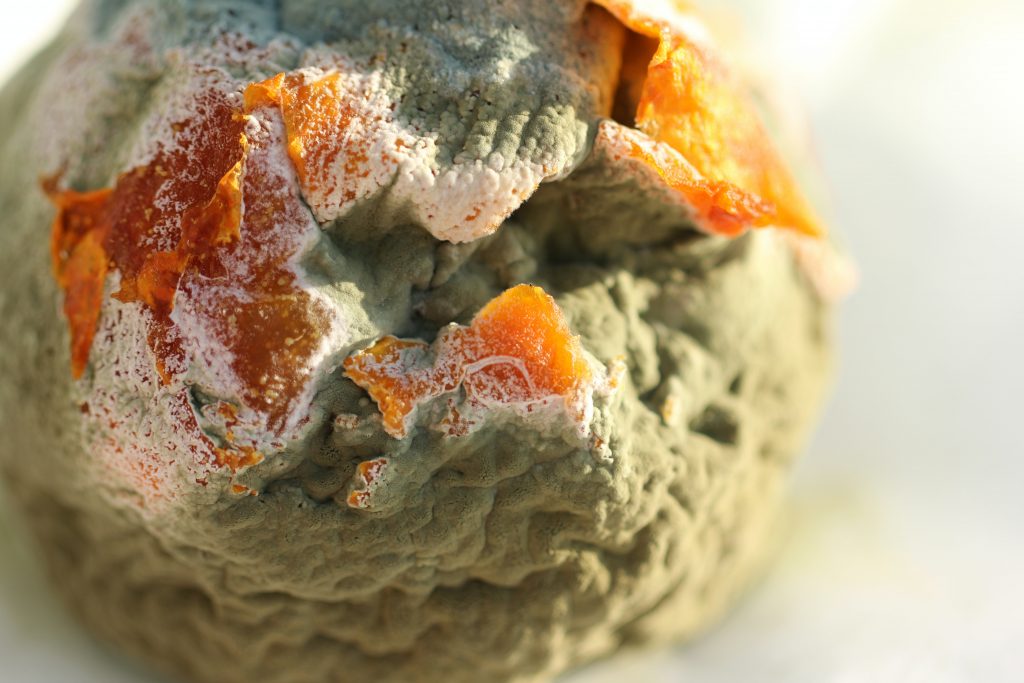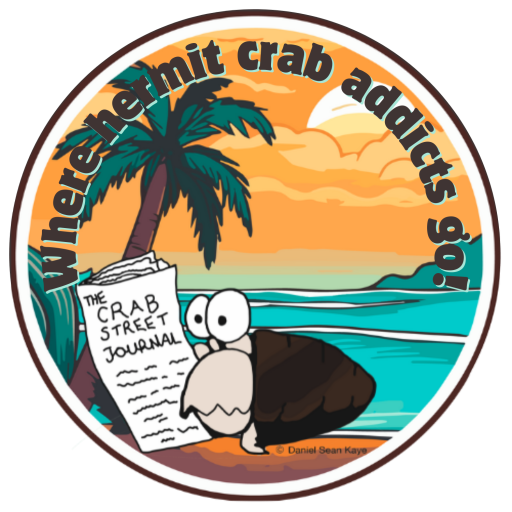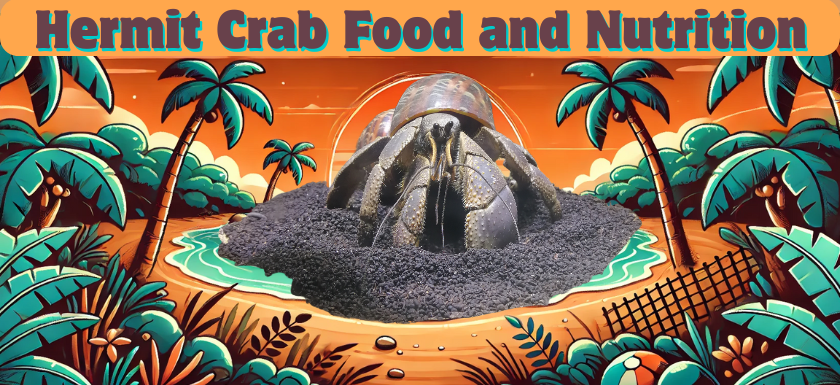
Mold in general is universally viewed as unsafe and to be avoided.
https://www.epa.gov/mold/mold-and-health
If you visit Google Scholar and search for mold dangers there are about 116,000 results.
Yet, our hermit crab community is repeatedly challenged to prove why mold is unsafe for hermit crabs. Logically speaking, even if mold was proven safe for hermit crabs through research, why would you choose to expose yourself, your family and other pets to the dangers of mold?
I challenge you to:
A. Provide research that proves there is some benefit to hermit crabs from living with/eating mold, that is so unique and important that there is no other known safe source for it.
B. Provide research that proves no harm will come to the hermit crab from being in a closed environment with mold spores.
C. Provide research that identifies the types of mold you wish to allow as a non threat to hermit crabs.
So in response to the argument ‘Why is mold unsafe?’ I say ‘What is so good about mold?’
Common Arguments Made in Favor of Allowing Mold to Grow in the Crabitat
“Hermit crabs eat mold in the wild.”
This argument holds zero merit. Hermit crabs have also been seeing eating human feces [1] and rat poison [2]. Do you plan to feed those as well?
There is also no data available to understand the long-term effects of eating mold, or rat poison.
Babies will eat anything. Teenagers will eat Tide pods.
Feral cats eat birds and small animals. Do you provide birds and small animals to your pet cat to hunt and eat?
One of our dogs likes to eat bugs from the yard. We don’t allow bugs in the house to replicate her yard environment.
Dingoes eat human babies. Do you feed your pet dingo human babies? (That’s how silly this argument is.)
Captive hermit crabs live in a closed environment, not the open air of the beach. They aren’t forced to breath moldy air and dig in moldy sand in the wild.
“Hermit crabs are exposed to mold in the wild.”
Gazelles are exposed to lions in the wild.
Penguins are exposed to seals in the wild.
Deer, elk, bison and countless animals share a habitat with wolves. Does the zoo place them in the same enclosure to replicate their natural habitat? Certainly not.
Humans and animals alike are exposed to or live among predators and hazards. That doesn’t mean we introduce them to our home. Your role as a keeper is to provide your animal a safe habitat in which to thrive.
Mold is harmful to humans and animals and does not provide a nutritional benefit that outweighs the potential risk to the hermit crab and the known risk to you.
I contacted the Invertebrate Veterinarian Society about the subject of mold and hermit crabs. The vet I spoke with agree with the statement that mold in an enclosed habitat is not safe.
Evidence That There is a Risk Associated with Fungi (mold) in Your Hermit Crab Habitat
Research Excerpts About Mold (fungal infections) and Crustaceans:
The shell disease syndrome has been reported from many freshwater and marine crustaceans of economic importance. Signs of the disease syndrome include erosion and pitting of the
exoskeleton, resulting from activities of chitin-destroying microorganisms–bacteria and fungi of several genera.
Mortalities from shell disease have been observed, occasionally at high levels, in impounded populations. Destruction of gills and adhesions of the exoskeleton which prevent ecdysis have been considered to be responsible factors, as have secondary systemic infections which develop after perforation of the chitinous integument.
Shell disease has been observed in crustaceans from badly degraded coastal/estuarine waters, often associated with so called “black gill” syndrome.
Shell erosion in Crustacea is, therefore, a particular problem in impoundments, in aquaculture facilities, and in degraded habitats. It is contagious, but its etiology is complex, involving chitinoclastic and other microorganisms and environmental stressors. It may contribute to mortality, principally by providing a route of entry for other facultative pathogens, but also by destroying the gills of crustacean hosts and by interfering with molting.
Source: Sindermann, C. J. (1989). The Shell Disease Syndrome in Marine Crustaceans. United States: U.S. Department of Commerce, National Oceanic and Atmospheric Administration, National Marine Fisheries Service, Northeast Fisheries Center.
The syndrome appears to be universal among crustaceans from the subarctic to the
subtropics in fresh and marine waters wherever crustaceans occur. In Europe, the
causative agents are considered to be several different fungi and it occurs in lobsters,
some crayfish species, a crab and a number of non-commercial species of crustaceans
where it is called “burn spot disease”. In North America, the disease has been studied
most extensively in lobsters and is regarded as bacterial in origin.
Source: Stewart, J.E. Lobster diseases. Helgolander Meeresunters 37, 243–254 (1984). https://doi.org/10.1007/BF01989309
Fungi which may form potential pathogens stressed or immunodeficient crustaceans is groups of Lagenidium sp., Sirolpidium sp. And Fusarium sp. The main fungal diseases are larval mycosis and Fusarium disease. Larval mycosis caused by legenidium sp, and Sirolpidium sp, which are typical fungi attaching shrimp larvae result in fungal spore in gills and appendages, and high shrimp larvae mortality (90%) in 2-3 days. Fusarium disease is a common disease that affects all developmental stages of penaeid shrimp in aquaculture. This disease generated from Fusarium solani, F. oxysporum and other Fusarium sp. causes gill fouling (Black gill), tissue lesion with melanisation of appendages, fungal spores in gills and high mortality (Gabriel and Felipe, 2000). Sixteen species of fungal flora and five species of bacteria from Charybdis feriata have been isolated.
Source: Ghaware AU and Jadhao RG. Impact of bacterial and fungal infections on edible crab Paratelphusa jacquemontii (Rathbun): A Review, Int. Res. J. of Science & Eng
Mycotic diseases
Several fungi are known to cause diseases in crustaceans and may cause mortality ranges from 20 to 100 per cent. However three among them are more dangerous to the larval stages and another to the juvenile stage. The common disease causing fungi are Lagenidium, Siropodium, Haliphthoros and Fusarium. Environmental factors such as rainy season, humid condition, low salinity etc. are found to be increasing the fungal growth.
Source: Kaoud, Hussein. (2016). Diseases of crabs and lobster. 10.13140/RG.2.1.2665.3041.
Fungal Disease
Many diseases of aquatic animals are caused by organisms that are part of the normal biota of their surrounding environment. Fungi and fungal-like organisms (straminipilous organisms) occur in most waters. They are either saprobes that colonize decaying organic matter, or parasites, which attack a great variety of aquatic organisms leading to disease outbreaks. Among the parasitic species, many are known to be important causative agents of aquatic animal diseases. They are generally opportunistic invaders, but once established, are often fatal and difficult to treat. Thus, fungi and straminipilous organisms may be problematic pathogens under stressful conditions in an aquaculture system.
Fusarium spp. are ubiquitous soil fungi.
EFFECTS ON HOSTS:
Infection usually starts on damaged tissues such as wounds, gills damaged from chemical treatments or pollutants, and lesions resulting from other disease processes. Once infection is established, it is usually progressive with 30%remission rate. Lesions may also serve as a route of entry for other opportunistic pathogens.
Source: Leaño, E. M. (2001). Fungal diseases. In G. D. Lio-Po, C. R. Lavilla, & E. R. Cruz-Lacierda (Eds.), Health management in aquaculture (pp. 43-53). Tigbauan, Iloilo, Philippines: Aquaculture Department, Southeast Asian Fisheries Development Center.
Shrimp fed 50 to 300 mg of AFB1 per kg in the feed (experiment 2) died within 4 weeks and
showed lesions of the hepatopancreas, mandibular organ, and hematopoietic organs (6a). The
response (mortality) was not dose dependent, and a difference could only be seen between the
control groups and the AFB1-treated groups. These results suggest that AFB1 affected
shrimp in a similar manner by both the intramuscular and oral routes. The same hepatopancreatic lesions were produced with both routes of administration (6a); however, the aflatoxin-contaminated feed had to be administered repeatedly to produce necrosis and lethality.
Source: Wiseman MO, Price RL, Lightner DV, Williams RR. Toxicity of aflatoxin B1 to penaeid shrimp. Appl Environ Microbiol. 1982 Dec;44(6):1479-81. doi: 10.1128/aem.44.6.1479-1481.1982. PMID: 6818903; PMCID: PMC242216.
Fungal infection in fish gills.
References
Barnes, David K. A. “Ecology of Tropical Hermit Crabs at Quirimba Island, Mozambique: a Novel and Locally Important Food Source.” Marine Ecology Progress Series, vol. 161, 1997, pp. 299–302. JSTOR, www.jstor.org/stable/24859033. Accessed 20 Aug. 2021.
de Wilde, P.A.W.J. (1973). On the ecology of Coenobita clypeatus in Curaçao with reference to reproduction, water economy and osmoregulation in terrestrial hermit crabs. Studies on the Fauna of Curaçao and other Caribbean Islands, 44(1), 1–138.
https://www.dfo-mpo.gc.ca/science/aah-saa/diseases-maladies/sirzoocc-eng.html
Wiseman MO, Price RL, Lightner DV, Williams RR. Toxicity of aflatoxin B1 to penaeid shrimp. Appl Environ Microbiol. 1982 Dec;44(6):1479-81. doi: 10.1128/aem.44.6.1479-1481.1982. PMID: 6818903; PMCID: PMC242216.
Leaño, E. M. (2001). Fungal diseases. In G. D. Lio-Po, C. R. Lavilla, & E. R. Cruz-Lacierda (Eds.), Health management in aquaculture (pp. 43-53). Tigbauan, Iloilo, Philippines: Aquaculture Department, Southeast Asian Fisheries Development Center.
Kaoud, Hussein. (2016). Diseases of crabs and lobster. 10.13140/RG.2.1.2665.3041
Ghaware AU and Jadhao RG. Impact of bacterial and fungal infections on edible crab Paratelphusa jacquemontii (Rathbun): A Review, Int. Res. J. of Science & Eng
Stewart, J.E. Lobster diseases. Helgolander Meeresunters 37, 243–254 (1984). https://doi.org/10.1007/BF01989309
Sindermann, C. J. (1989). The Shell Disease Syndrome in Marine Crustaceans. United States: U.S. Department of Commerce, National Oceanic and Atmospheric Administration, National Marine Fisheries Service, Northeast Fisheries Center.

